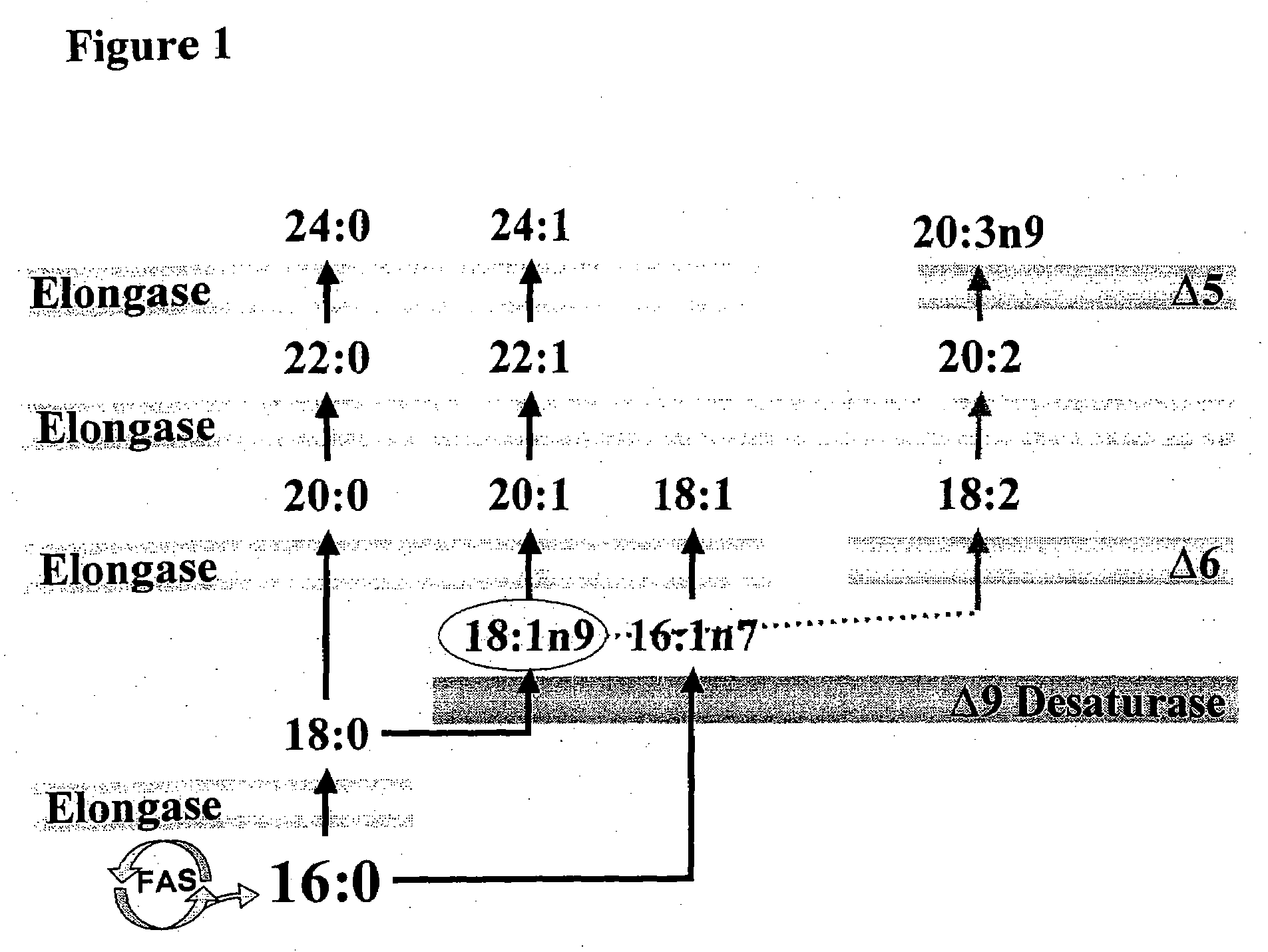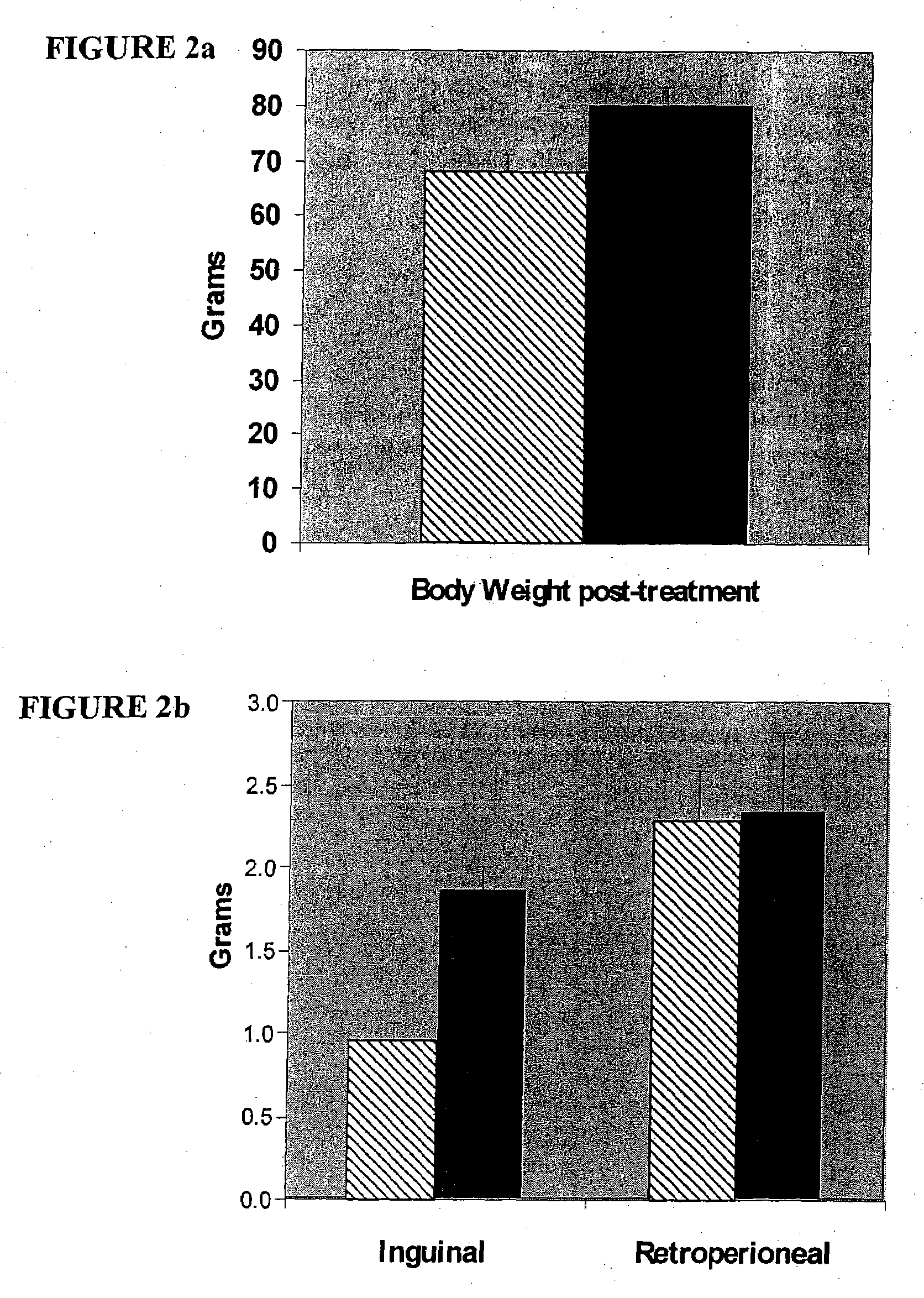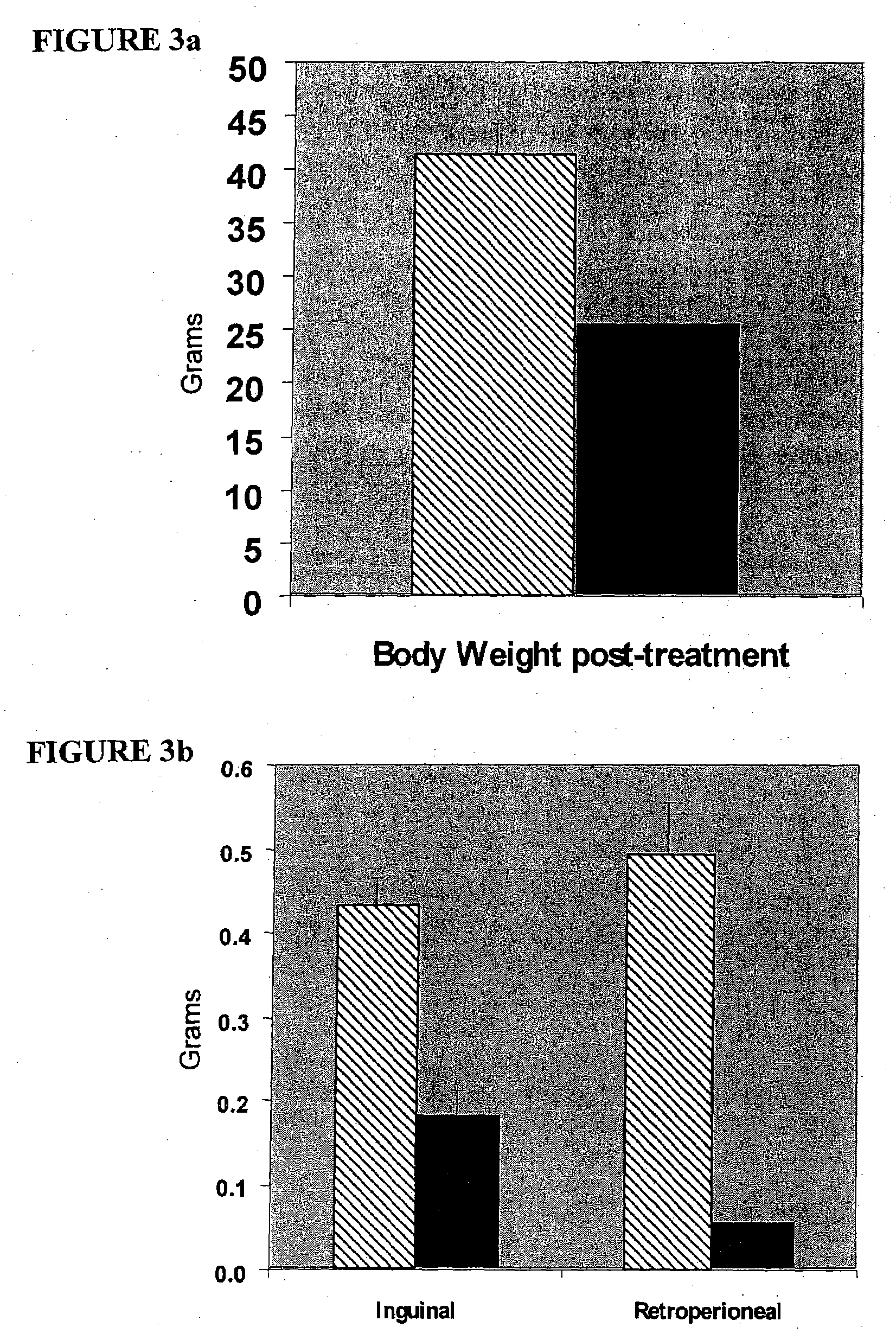Methods of using quantitative lipid metabolome data
a quantitative and lipid-metabolome technology, applied in the field of quantitative lipid-metabolome data, can solve the problems of insufficient quantitative technology for assembling information about the proteome, limited usefulness of genomic strategies in treating diseases, and many limitations of gene expression, and achieve the effects of reducing the difficulty of quantitative data collection, and improving the accuracy of quantitative data collection
- Summary
- Abstract
- Description
- Claims
- Application Information
AI Technical Summary
Benefits of technology
Problems solved by technology
Method used
Image
Examples
example 1
Palmitoleic Acid as a Marker for Endogenous Fatty Acid Biosynthesis, and Accompanying Phenotypes
[0148]This example provides specific methods that have been used to examine tissues taken from mice treated with either rosiglitazone (trial 1), a thiazolidinedione, or CL316,243 (trial 2), a β-3 adrenergic agonist. It is understood that the described methods can be used to analyze lipid metabolites from other subjects, including particularly animals other than mice.
Methods
Samples
[0149]Mouse tissue and plasma samples were a generous donation to Lipomics Technologies, Inc., from Dr. Edward Leiter of the Jackson Laboratory (Bar Harbor, Me.). Samples included the plasma, heart, liver and inguinal adipose of mice treated with pharmaceuticals or their corresponding controls.
[0150]In trial 1, prediabetic male F1 mice (from a cross of the obese NZO and lean NON mouse strains) were fed a control diet with or without the presence of the PPARs-γ agonist rosiglitazone for 4 weeks (at 0.2 g rosiglita...
example 2
Identification of Therapeutic Compounds
[0176]The linkage of specific lipid metabolites to de novo fatty acid synthesis and related conditions as disclosed herein can be used to identify compounds that are useful in treating, reducing, or preventing such conditions, including for instance diabetes, weight gain, weight loss (e.g., wasting), obesity, hypo- and hyper-thyroidism, menopause, immuno-tolerance, auto-immunity, aging, and / or cardiovascular disease. These marker molecules can be used alone or in combination, for instance in sets of two or more that are linked to a particular condition, for instance in a condition-related profile or fingerprint. Specific provided marker molecules include the following lipid metabolites, assessed either as free fatty acids or as components of a lipid class (as discussed throughout): palmitoleic acid (16:1n7), vaccenic acid (18:1n7), palmitic acid (16:0), stearic acid (18:0), oleic acid (18:1n9), all n7 fatty acids, all n9 fatty acids, all satura...
example 3
Profiles (Fingerprints)
[0179]With the provision herein of specific molecules the levels of which, or proportional levels of which, are linked to de novo fatty acid synthesis, profiles that provide information on the de novo fatty acid synthesis-state of a subject are now enabled.
[0180]De novo fatty acid synthesis-related profiles comprise the distinct and identifiable pattern of (or level) of sets of lipid metabolites, for instance a pattern of high and low levels of a defined set of fatty acids and / or fatty acids in particular lipid classes. The set of molecules in a particular profile will usually include at least one of the following: palmitoleic acid, vaccenic acid, palmitic acid, stearic acid, oleic acid, all n7 fatty acids, all n9 fatty acids, or all saturated fatty acids. Particular profiles include ratios between specific metabolites or metabolite categories as provided herein (such as palmitoleic to palmitic, n7 to saturated, n7 to n9, and oleic to stearic). In particular e...
PUM
| Property | Measurement | Unit |
|---|---|---|
| body weight | aaaaa | aaaaa |
| pH | aaaaa | aaaaa |
| de novo fatty acid synthesis | aaaaa | aaaaa |
Abstract
Description
Claims
Application Information
 Login to View More
Login to View More - R&D
- Intellectual Property
- Life Sciences
- Materials
- Tech Scout
- Unparalleled Data Quality
- Higher Quality Content
- 60% Fewer Hallucinations
Browse by: Latest US Patents, China's latest patents, Technical Efficacy Thesaurus, Application Domain, Technology Topic, Popular Technical Reports.
© 2025 PatSnap. All rights reserved.Legal|Privacy policy|Modern Slavery Act Transparency Statement|Sitemap|About US| Contact US: help@patsnap.com



